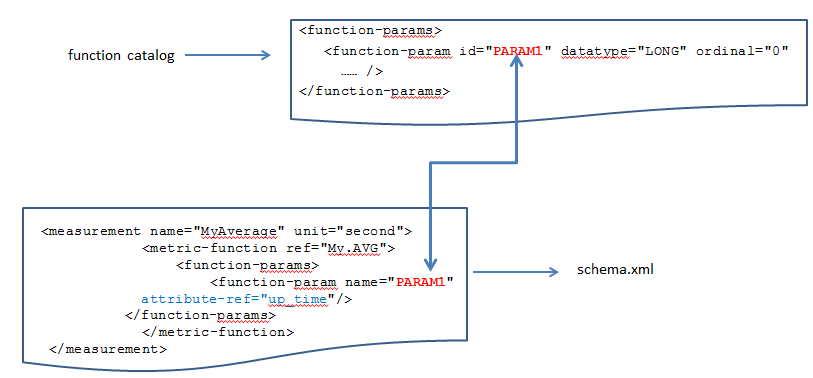Creating a Function Catalog
Procedure
<function-descriptors name="my-functions">
<function-descriptor name="My.AVG"
category="my category" multivalued="false"
implclass="com.tibco.rta.runtime.metric.functions.MyMetric"
datatype="DOUBLE" description="My metric function">
</function-descriptor>
| Property Name | Description |
|---|---|
| name | Name of the function |
| category | The category name |
| multivalued | Indicates whether or not the function is single-valued or multivalued. The default value is false. Remember that for a multivalued function, all values must be of the same datatype. |
| implclass | To create custom metric function, you should extend either
SingleValueMetricFunction or
MultiValueMetricFunction.
For more information about the API, refer to the TIBCO Service Performance Manager Java API reference pages. |
| datatype | Datatype of the metric. For example, the datatype of AVERAGE is generally be a double. |
| description | Description of the metric function |
Copyright © Cloud Software Group, Inc. All rights reserved.

